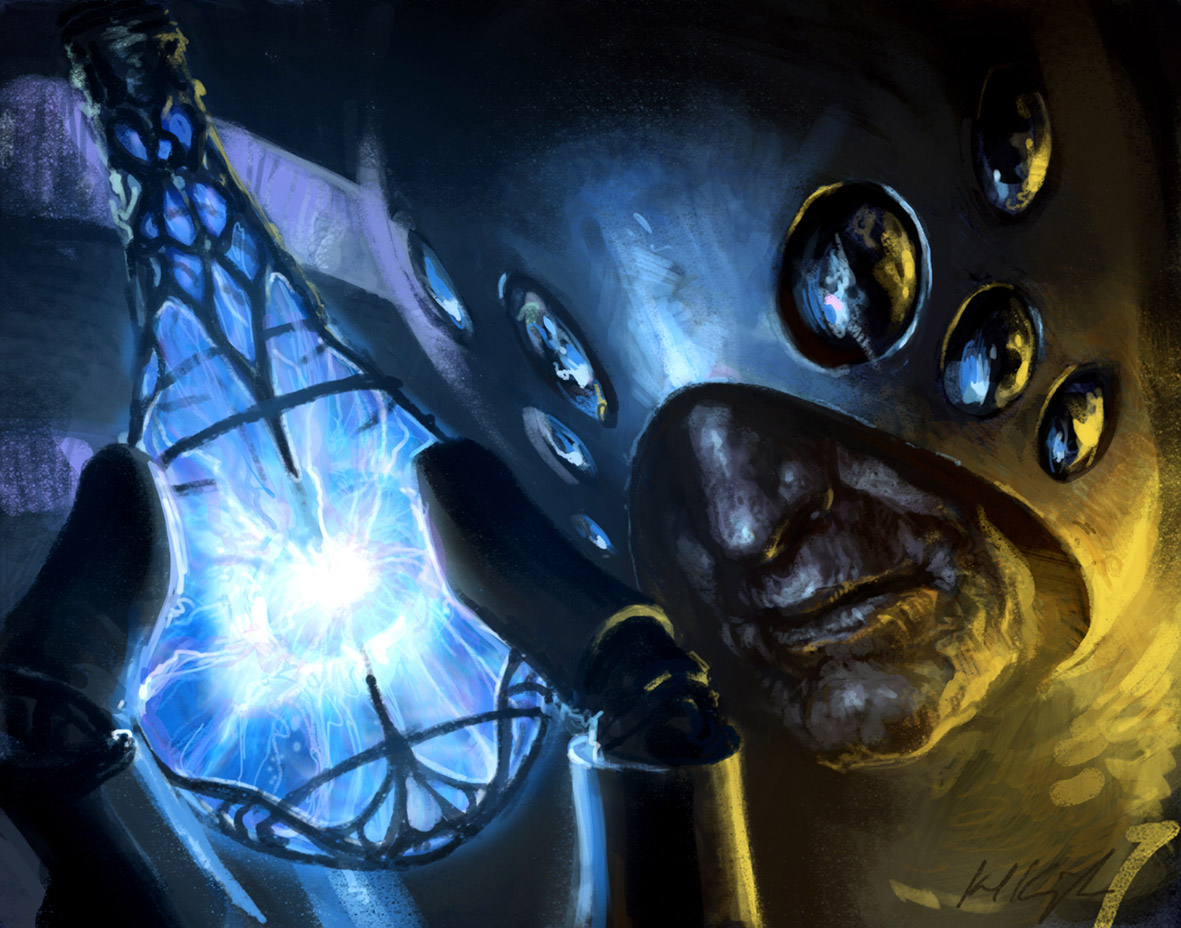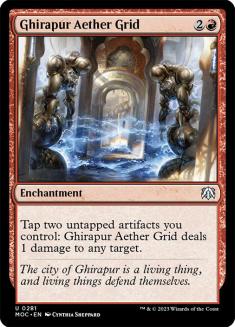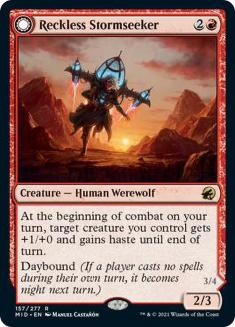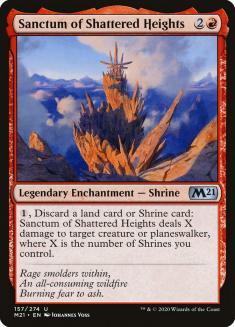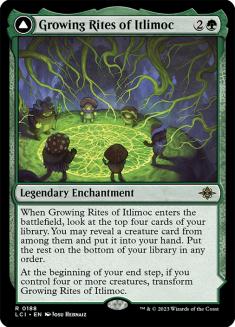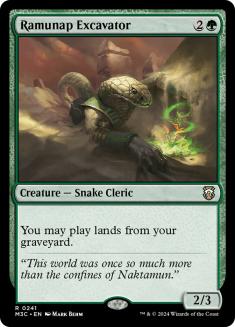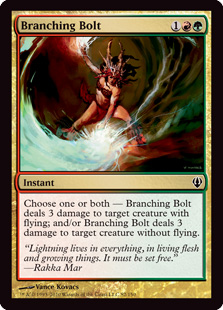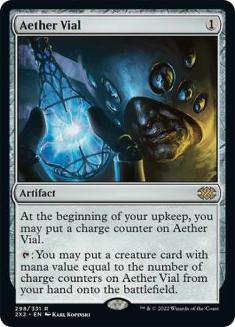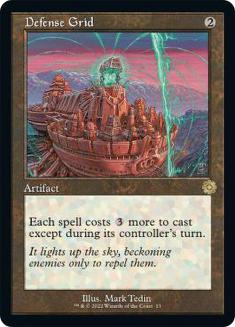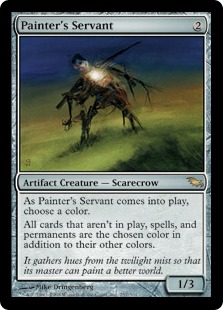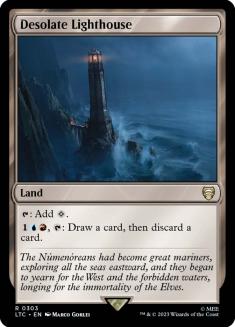Hello again, gamers. I have successfully weathered last week’s winter storm, and am anxiously awaiting the spring equinox. I slid my way across a completely iced-over sidewalk while running errands yesterday, so we’re not there yet, and we’re still largely in the “think about Cube” season. That’s fitting, because I owe you all the breakdown of ten more cards that taught me lessons about Cube design as a follow-up to last week’s article.
You know the drill at this point, so let’s dive right in!
Ghirapur Aether Grid
Ghirapur Aether Grid had a brief run in my Artifact Twobert, but it didn’t make it much longer than one game before its replacement. I thought the card was a cool payoff and build-around, and in a sense it falls in those categories, but that’s not all that the card is.
Modern looks a lot different now from how it did a few years ago, but Ghirapur Aether Grid was once a powerful sideboard card in Modern Affinity as an answer to a number of decks, with the mirror match being one of the most meaningful spots to sideboard the card in. My Artifact Twobert generates matches that often feel like Affinity mirrors, and as such Ghirapur Aether Grid made it feel like one player was pre-sideboarded with a very hateful card. There can be places and times for hate cards in Cube, but one that is easily maindeckable and hates on the specific archetype that you’re really trying to push in a Cube is about as offensive as a hate card can be.
I do think that Ghirapur Aether Grid does have some applications as a Cube card. It just loses nearly all of its charm when there are abundant one-toughness creatures for it to mow down. In a Cube where things like Treasures and other artifact tokens are a heavy theme and where players are encouraged to play bigger creatures or more combo and controlling decks, then I can see the card being really fun. In an environment flush with small creatures, though, it’s just an incredibly repeatable Visara the Dreadful that doesn’t have much difficulty closing the game.
Reckless Stormseeker
I really liked a lot of the new Werewolf designs when Innistrad: Midnight Hunt was previewed, and I was intrigued by the idea of the new Werewolf mechanic keeping all Werewolves on the same side. I thought that sounded very simple and clean. After some experience actually playing with the mechanic, my feelings on day and night are night-and-day different. It is very likely the worst mechanic in terms of tracking for paper play of all time.
The fact that you have to keep tracking day and night, even when no permanents care about the mechanic after it is established, is miserable, and even if only one card in the Cube tracks the mechanic, you still have to track it because Cubes tend to involve some amount of graveyard recursion. In this era where players know an increasingly smaller percentage of the existing card pool, this amount of tracking and attention to so small a number of cards is completely unacceptable.
I like Reckless Stormseeker as a powerful red three-drop, and Suspicious Stowaway is an awesome card all the way up to Vintage Cube, but the tracking baggage just makes them untenable for paper play in my experience. I added a lot of day and night cards to my Spooky Cube initially, and a few cards with the mechanic in other places, but I have gone out of my way to cut them all. The juice isn’t worth the squeeze here.
Sanctum of Shattered Heights
Sanctum of Shattered Heights is a very specific example that really crystallizes a concept with much broader applications. I have a Shrines theme in my Peasant Twobert, and I’ve tinkered a lot with balancing the archetype, which mostly involves answering the question of how many total Shrines to include. It’s a very specific archetype which allows you to track the impact of your changes quite easily. In theory, just including every Shrine would be the way to push the archetype to be as consistent and powerful as possible. Even in that circumstance, though, Sanctum of Shattered Heights still isn’t powerful enough to actually play.
It’s the only Shrine that asks for additional material to make any use of its ability at all. The upfront cost of three mana is steep. Shrines have plenty going on, even without featuring the weakest options, so Sanctum of Shattered Heights makes an easy cut. Here’s where the broader principle shows up: when adding cards to support an archetype, make sure that players drafting that archetype would actually play the card. Cubes aren’t just lists of cards; they’re play environments.
The other card that comes to mind when I look upon my Sanctum of Shattered Heights is Kalastria Nightwatch. That card took up a slot in one iteration of an Arena Cube to support a lifegain theme because it technically cares about gaining life, but the rate is impossibly bad. When cards for a theme consistently go late in draft and don’t ever see meaningful play, they’re not serving that theme. They’re detracting from it, and the Cube as a whole. Volume alone isn’t enough.
Growing Rites of Itlimoc
I think Growing Rites of Itlimoc is a really cool card. In fact, I’d consider it a “staple” for something like a Commander Cube. I’ve struggled to make it work in other environments designed with more conventional two-player games in mind, though.
The issue is first that Growing Rites of Itlimoc doesn’t offer enough on the front side, and offers too much on the back. The card only really makes sense in a Cube where Gaea’s Cradle would be too powerful, and at that point, what are you really doing with the card? If the Cube is reasonably highly powered, then you just can’t afford to spend three mana to maybe draw a card, and if the Cube is lower-powered, then getting a bonus Gaea’s Cradle can just be totally berserk given any mana sink. Or maybe there are no mana sinks, at which point… why bother?
The card just looks much cooler and more impactful on paper than it does in practice, and it’s very difficult to craft an environment where both the front and back are appropriate. Again, this is the exact space a lot of Commander cards live in, where considerations go well beyond a card’s individual power level.
Ramunap Excavator
Ramunap Excavator is technically playable, and it shows up in some of my Magic Online (MTGO) Vintage Cube decks, but it sure doesn’t do much. The reason why my copy lives in my closet is because, while Ramunap Excavator looks like a version of Crucible of Worlds that you’d play if you weren’t comboing, it’s really just the same card that requires green mana, while being much more fragile.
I like the idea of Ramunap Excavator being used for value for stuff like fetchlands and Horizon Canopy, but that promises some kind of value engine in theory, while playing more like a more limited Eternal Witness in practice. As a creature, it can be tutored for in more ways than Crucible of Worlds and can hold Equipment and all that other stuff that creatures do, but for as much as the card might seem like a more playable Crucible, it’s really just a second copy of the card and a consolation prize, considering its fragility. What I mean when I say it’s a second copy of Crucible is not that it’s worse in every deck, but that the card generally doesn’t work where Crucible wouldn’t, and Crucible goes into more decks.
I often look for creature versions of effects because of the utility they offer in attacking planeswalkers, but Ramunap Excavator is an example of an effect that’s a little too specific at a rate that’s not good enough for the body to really matter. In lower-power-level environments, I could see things like cycling lands make Ramunap Excavator inviting, but it’s been a dud in general for medium and higher power levels for me, save for filling out slots in Cubes of larger sizes.
Branching Bolt
Branching Bolt was in my very first Cube, a Pauper Cube that I built over ten years ago (woof). In retrospect, Branching Bolt checks all the boxes for what I don’t want to use gold slots for these days.
For starters, I try to use as few gold slots for removal spells as possible. Mono-color cards offer plenty of removal options, and removal generally won’t be nearly a significant enough draw for a two-color spell. Beyond that, what is Gruul about Branching Bolt? What about the card incentivizes you to play green and red? It doesn’t ramp or deliver beatdowns. The card is decidedly un-Gruul.
Of course, there’s a point where a card is just efficient enough that those factors don’t matter as much. This is where Branching Bolt completely strikes out. Sure, a three-mana two-for-one removal spell is awesome, but that’s just what Branching Bolt pretends to be. You have no control over the condition of your opponent controlling a flyer and a non-flyer that are the two targets you want to use your removal spell on. More often than not with Branching Bolt, you’re paying a tax of one green mana on a Lightning Strike that can’t target players.
Branching Bolt isn’t Gruul, isn’t exciting enough to move in on two colors, and overpromises and underdelivers. There’s enough going on here for a potential mono-color slot, but Branching Bolt serves as a reminder to me of a lot of things not to do with gold.
Aether Vial
Aether Vial is another card that translates very poorly from Constructed to Limited, and one that oscillates between dominating games and being closer to an actual mulligan. There are a couple of places where I do like Aether Vial in Cube, but there are places where it didn’t work that resulted in me owning an extra copy.
I liked the idea of Aether Vial as something of a mana-fixer for creature-heavy decks. With Humans being a theme across all five colors in Spooky Cube, it made sense to me to give Aether Vial a shot, especially with Aether Vial being such an important card for Modern Humans. What I learned in trying this is that mana-fixing just isn’t enough. Aether Vial requires some amount of creatures generating card advantage and effects that are much better when you have access to them at instant speed to actually matter in games.
Basically, if you’re not Vialing in Flickerwisp along with a bunch of cards like Recruiter of the Guard and Eternal Witness, the card is rarely going to be worth drawing. Aether Vial actually really worked in my Tempo Twobert as an important card for those Flickerwisp synergies, but it falls flat when your cards are more generally castable and don’t gain much from the added flash. I’ve also liked it in the Artifact Twobert, where being an artifact serves as upside, but as an individual card, Aether Vial is looking for a more specific framework than it might seem at a glance. As a rule, I don’t like to use cards like this for colorless slots, which I generally like to reserve for cards that are playable in a very wide range of decks.
Defense Grid
Defense Grid may be the most disappointing card I’ve ever tried in Cube. Not only does it promise something miserable as a hate card, it doesn’t even deliver on what it promises. Let me explain.
The idea of Defense Grid is simple: you want to turn off counterspells. This is only worth a card from a strategic point of view if the spells you’re resolving are game-enders. It makes sense, then, that Defense Grid is for combo decks. The issue is that combo decks, at least in the environments where I was trying Defense Grid (namely Grixis Cube), tend to be blue. And the things those decks want to do when they’re not comboing or the other measures that they take to defend their combos are often counterspells.
You end up with a card that you really don’t want to cast on Turn 2, because you’re rather leave up a counterspell, which you won’t be able to do later if you do cast it. The games get a little scripted, and the script more or less reads that you’ve mulliganed. Now consider the possibility that the combo you want to protect is Tinker. So you sacrifice your Defense Grid to your Tinker, and suddenly you’re subject to the Force of Will check you were trying to avoid. I’d say Defense Grid doesn’t do anything, but a nod to Null Rod is less fitting than one to Sapphire Leech.
Defense Grid realistically could be a welcome addition to some Commander Cubes. In Cubes where card economy matters, though, where more often than not a deck that would want to play Defense Grid is a blue deck itself, there’s not a lot of charm with this one.
Painter’s Servant
Painter’s Servant is another card that eventually turned out to be a Grixis Twobert reject. Once I decided that I wanted to explore a world of two-card combos, I dug around for the most viable options to really have a long roster. Painter’s Servant plus Grindstone made sense in a Cube with an artifacts-matter theme, so I gave them a shot.
Part of the idea was that Painter’s Servant theoretically made Pyroblast better or could increase the range of cards that you pitched to your own Force of Will. This turned out to be a real stretch in practice, in no small part because the overwhelming majority of cards in that Cube are just powerful on their own. That’s generally important for any Cube that can facilitate two-card combos in a balanced way, and as such, Painter’s Servant ended up mostly existing as a worse version of other combos.
There’s no room in high-powered Cubes for cards that don’t play well on their own, and there’s no room for two-card combos in lower-powered Cubes. Painter’s Servant had sort of the Sanctum of Shattered Heights problem, where the feel of a “Combo Cube” is achieved plenty well with only the combos that players would happily play. There was no reason to stretch.
I could see Painter’s Servant playing well in a Cube that was some combination of lower on the power scale and higher on the wacky scale. Changing the color of every card enables shenanigans. They just don’t tend to mix well in an environment with more powerful combos and combos with more interchangeable pieces.
Desolate Lighthouse
The way that we think about manabases in Cubes has come a long way since I started Cubing. A lot more attention goes toward whether players can actually reliably play as many colors they want and actually cast their spells, rather than simply offering theoretically cool things. It’s very common to see Cube designers go as far as doubling up on mana-fixing lands as the only way that they break singleton, just to make sure the mana works. I remember a time when Grim Backwoods was actually in the MTGO Vintage Cube, which is an easy contender for worst card to ever make the list.
Lands like Desolate Lighthouse and Gavony Township have seen their share of Constructed success, but these are more examples of cards that don’t translate well to singleton Limited. They simply interfere with your ability to cast your spells on time too much. This is the sort of thing that a mono-color deck can bear and even prioritize, but when you consider how much scrutiny is given to drafting a gold spell at all, you really start to understand the steep cost of a colorless land that requires two colors of mana for its activated ability.
I had Desolate Lighthouse in my Izzet Twobert, and even there it can be a stretch to actually play the card. Two-color decks need to prioritize filling out their curve with castable spells and lands that increase the range of what this means. There’s sometimes room for a colorless land in this spread, but not reliably with conventional draft methods.
Another Path
Desolate Lighthouse starts to make sense when we look at something like Commander Cube. I also like it if you’re the type to draft more cards than the conventional 45. Seeing as the issue with a colorless “gold” land is that there’s too much other stuff that you need to prioritize, simply drafting or playing with more total cards helps to smooth out these issues. These aren’t my preferred Draft environments, as they deviate more from the structure of retail Limited, but it’s something to consider to make cards like Desolate Lighthouse shine bright once again.
This ended up being a really fun exploration into Cube design and lessons that I’ve learned over the years that covered quite a lot of space. I’m grateful for everyone who read it, and who encouraged me to write it in the first place. Be well, gamers.

